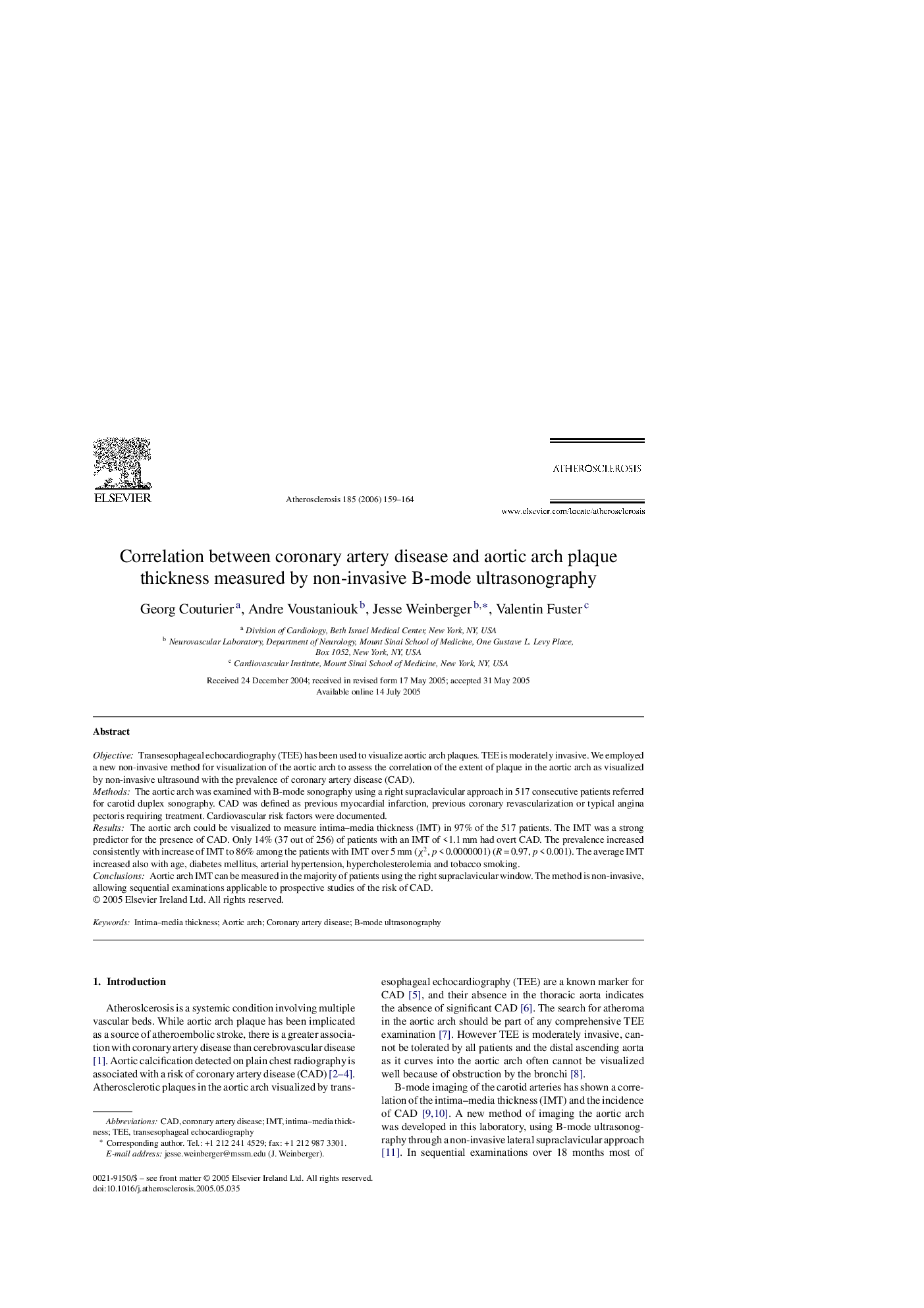| Article ID | Journal | Published Year | Pages | File Type |
|---|---|---|---|---|
| 2895413 | Atherosclerosis | 2006 | 6 Pages |
ObjectiveTransesophageal echocardiography (TEE) has been used to visualize aortic arch plaques. TEE is moderately invasive. We employed a new non-invasive method for visualization of the aortic arch to assess the correlation of the extent of plaque in the aortic arch as visualized by non-invasive ultrasound with the prevalence of coronary artery disease (CAD).MethodsThe aortic arch was examined with B-mode sonography using a right supraclavicular approach in 517 consecutive patients referred for carotid duplex sonography. CAD was defined as previous myocardial infarction, previous coronary revascularization or typical angina pectoris requiring treatment. Cardiovascular risk factors were documented.ResultsThe aortic arch could be visualized to measure intima–media thickness (IMT) in 97% of the 517 patients. The IMT was a strong predictor for the presence of CAD. Only 14% (37 out of 256) of patients with an IMT of <1.1 mm had overt CAD. The prevalence increased consistently with increase of IMT to 86% among the patients with IMT over 5 mm (χ2, p < 0.0000001) (R = 0.97, p < 0.001). The average IMT increased also with age, diabetes mellitus, arterial hypertension, hypercholesterolemia and tobacco smoking.ConclusionsAortic arch IMT can be measured in the majority of patients using the right supraclavicular window. The method is non-invasive, allowing sequential examinations applicable to prospective studies of the risk of CAD.
